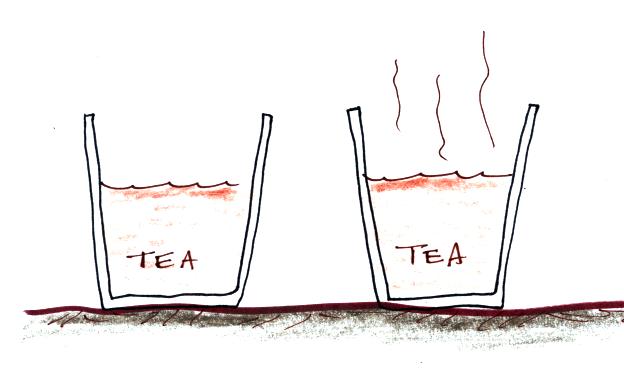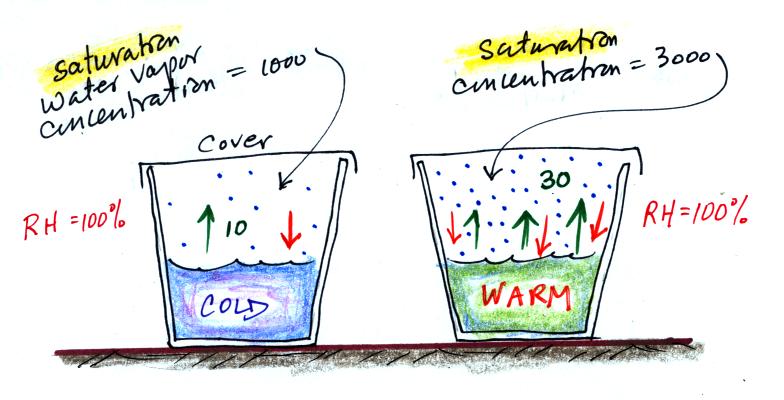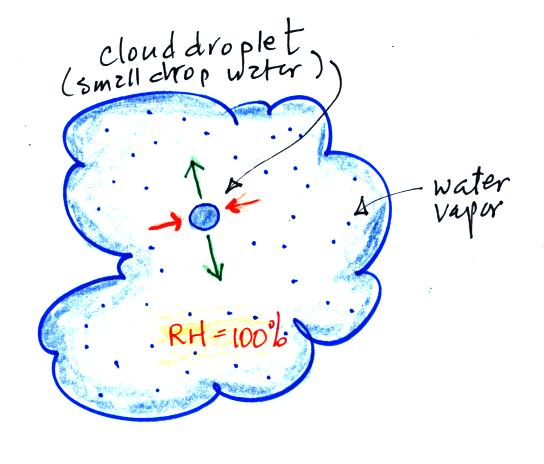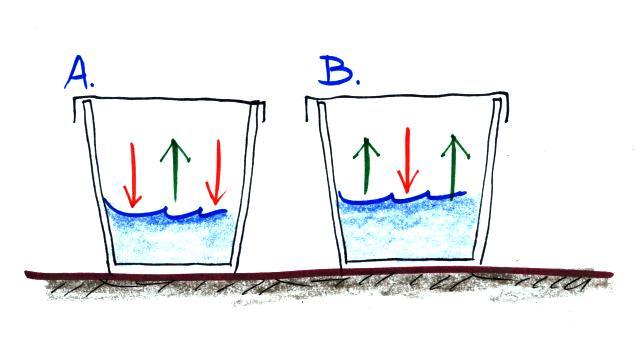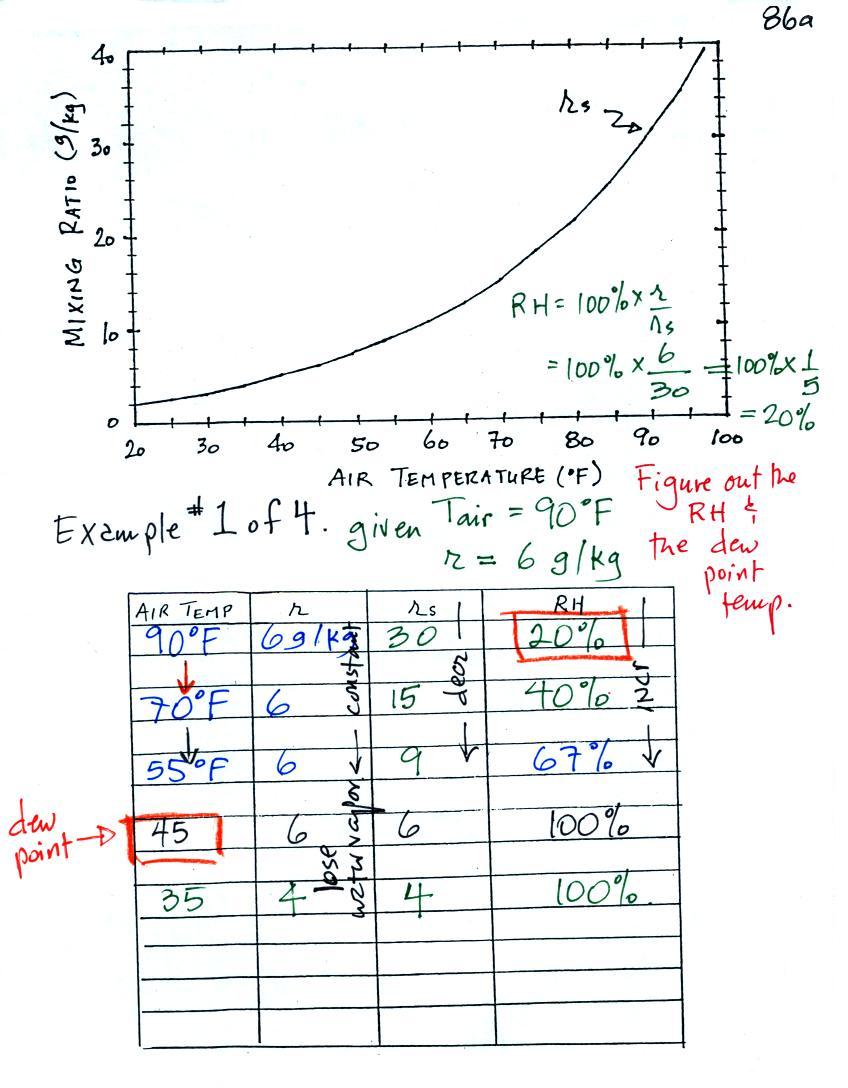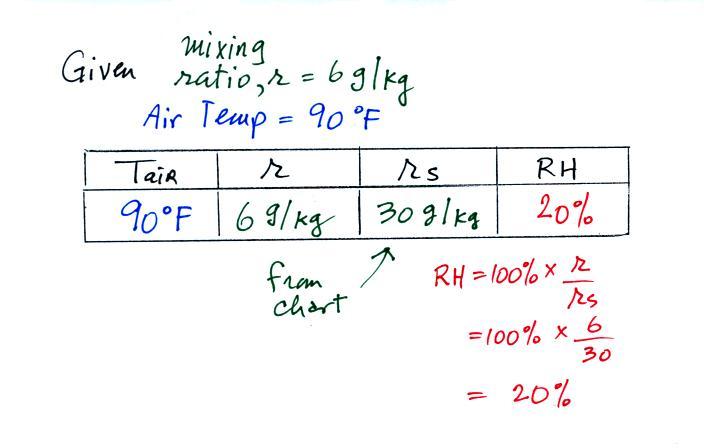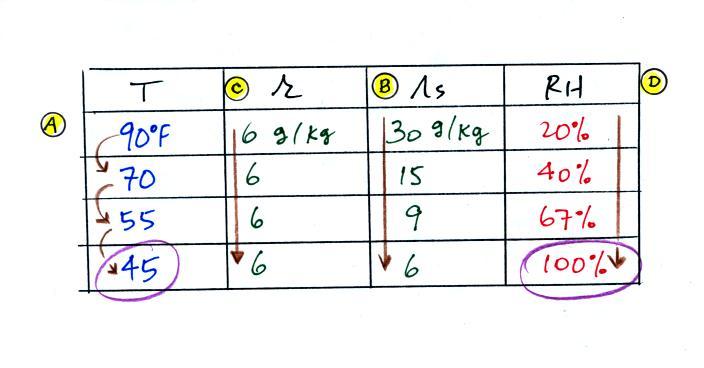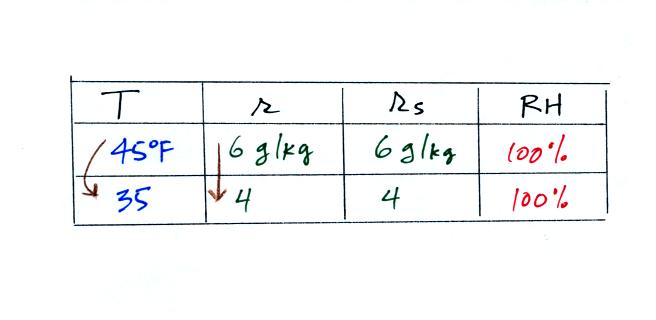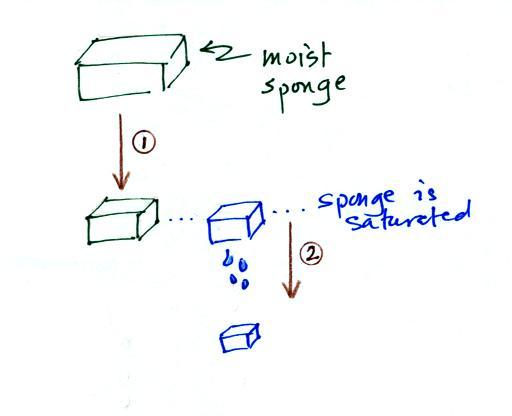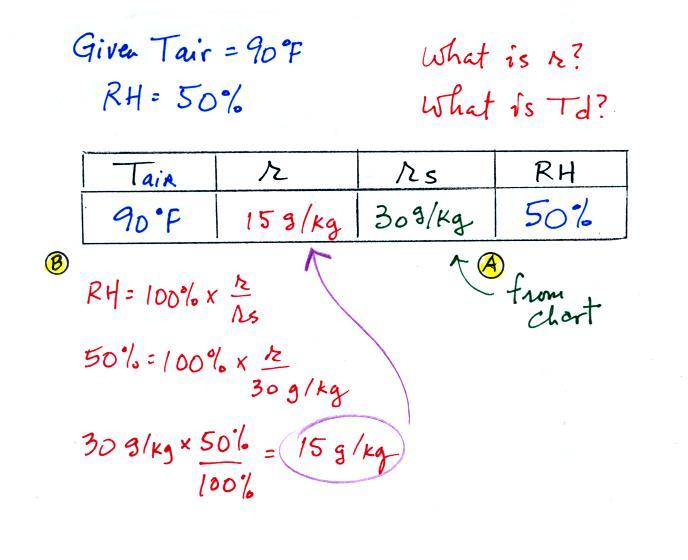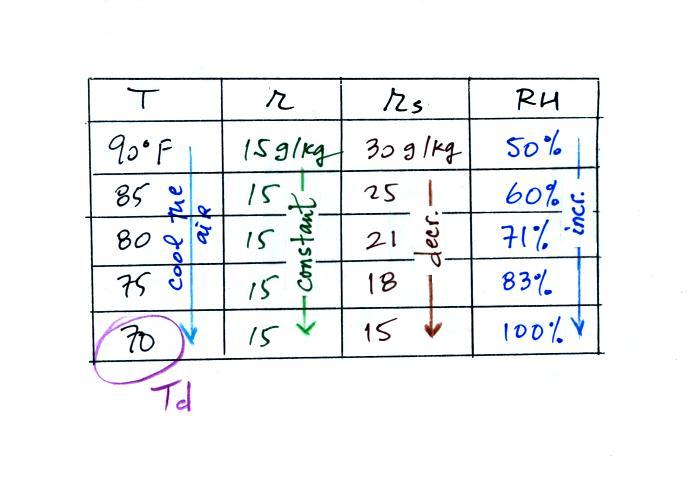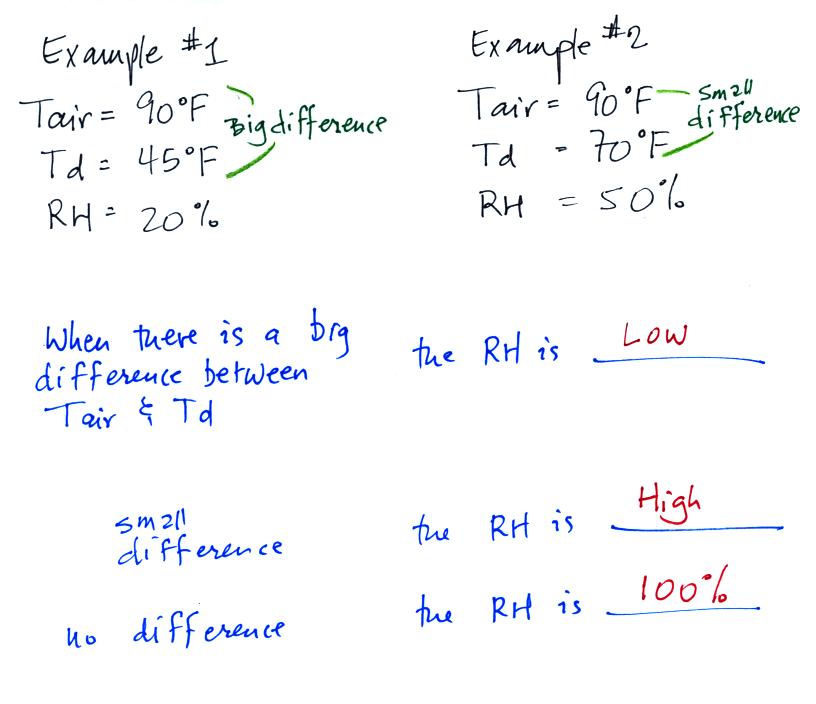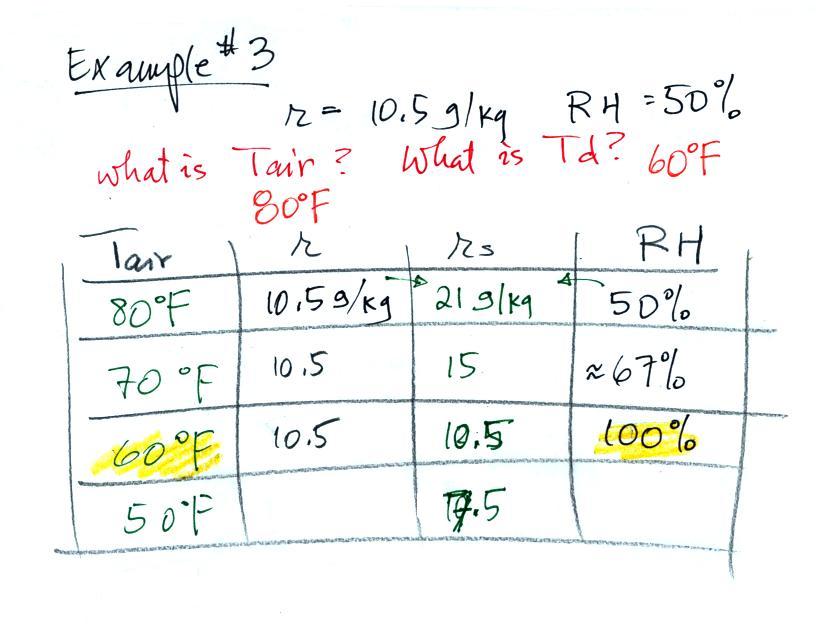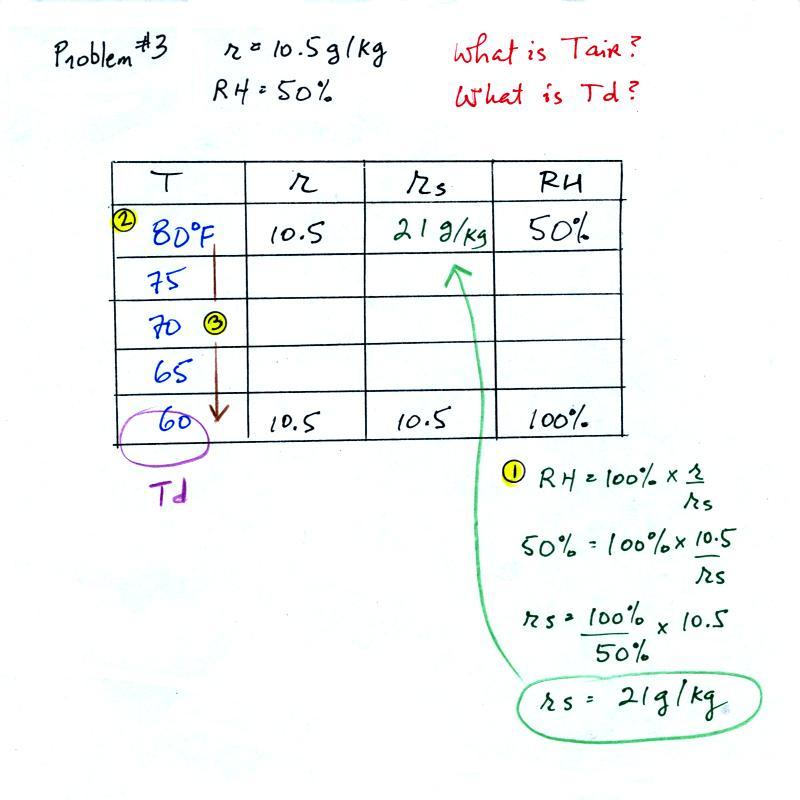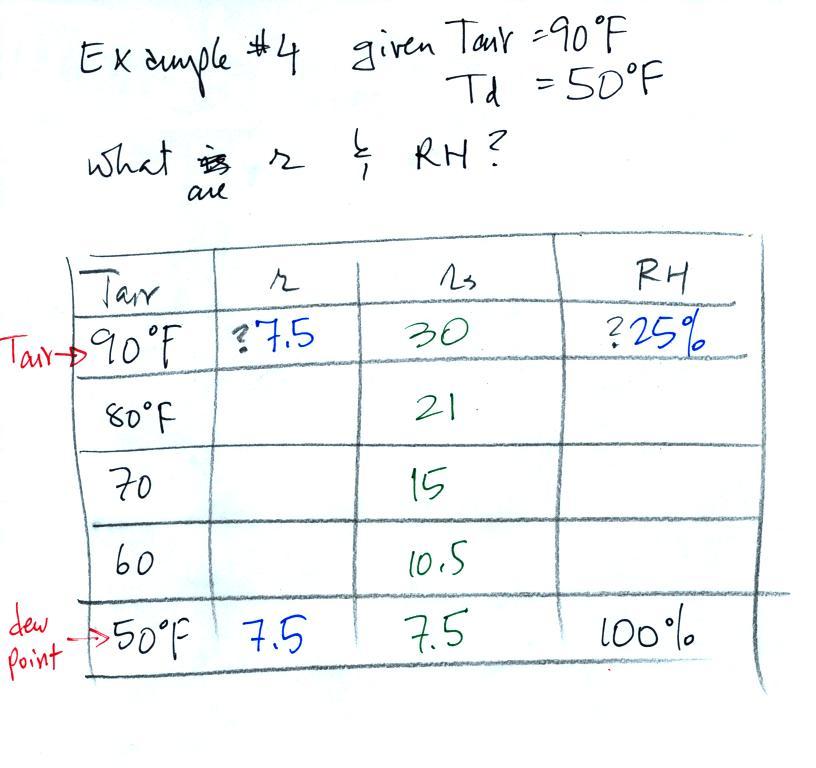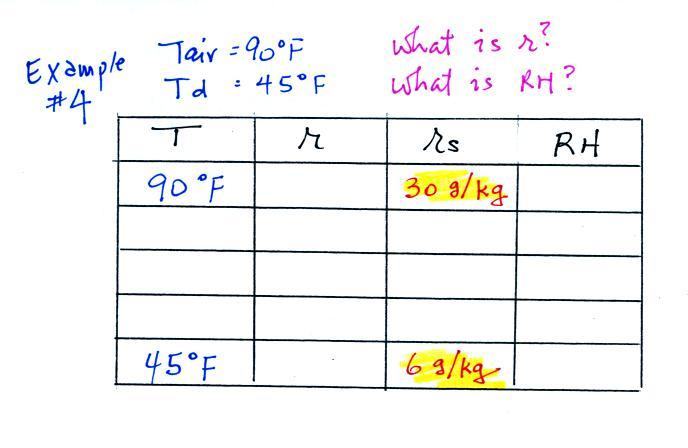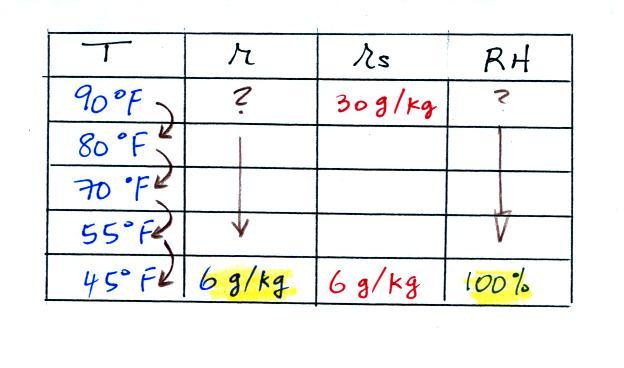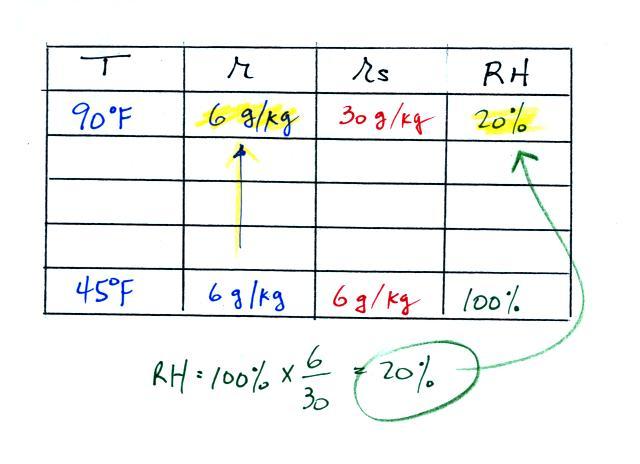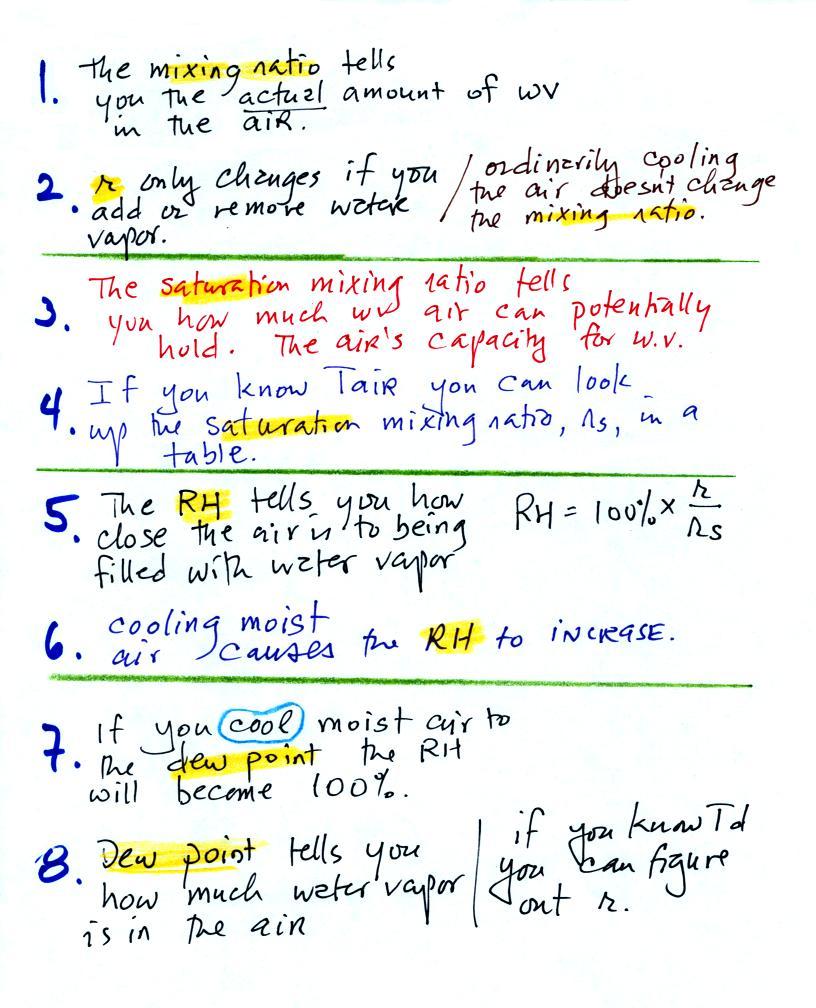Monday Oct. 17, 2011
click here to
download today's notes in a more printer friendly format
You heard two songs from Lhasa de Sela ("Con Toda Palabra"
and
"La Confession").
I'm
trying to improve my French so listening to songs that are sung in
French is educational.
The in-class Optional Assignment from last Friday has been graded
and was returned in class. A new Optional Assignment
is now online. Even if you don't normally do the Optional
Assignments I would encourage you to do this one. It will give
you some practice with the humidity variables that we learned about
last Friday and with the humidity type problems that we'll be doing in
class today.
Experiment #4 materials should be
available in class on Wednesday. I'm still hoping to be able to
hand out grade summaries sometime this week (most likely it will be
Friday).
Here's a review of the humidity variables that were introduced
last Friday.
mixing ratio (r)
actual amount of water vapor
in the air
saturation mixing ratio (rs)
maximum amount of water vapor
that can be in the air (depends on temp.)
relative humidity (RH)
how close is the air to being
"filled" to capacity or saturated with water vapor
dew point (Td)
1. gives an idea of the
actual amount of water vapor in the air
2. cooling the air to the dew point raises the RH to 100%
Most of the period was spent working out some humidity
example problems.
This
way
you
will
learn more about the 4 humidity variables; you'll see what they do, how
they "behave",
and what can cause
their values to change.
We spend maybe 10 minutes reviewing some material that was stuck
onto the online notes from last Friday's class. The objective
there was to explain why there is an upper limit to the amount of water
vapor that can be found in air and why that limit depends on
temperature.
Here's a little bit shorter explanation.
The first thing we need to realize is that warm water will
evaporate more rapidly than cool water. You probably know that
already. If a cup of iced tea were set next to a cup of hot tea
you probably be able to tell which was which by just looking at
them. You wouldn't need to touch or taste the tea or look for ice
cubes in the iced tea.
You might notice that one of the
cups of tea was steaming (the cup on the right above). This would
be the hot tea. You're not actually seeing water vapor.
Rather water vapor is evaporating so quickly that it is saturating the
air above. The air isn't able to accomodate that much water vapor
and some of it condenses and forms a cloud of steam. That's what
you see.
Now we'll redraw the picture and cover both cups so that water
vapor can begin to buildup in the air above the water in both
cups.
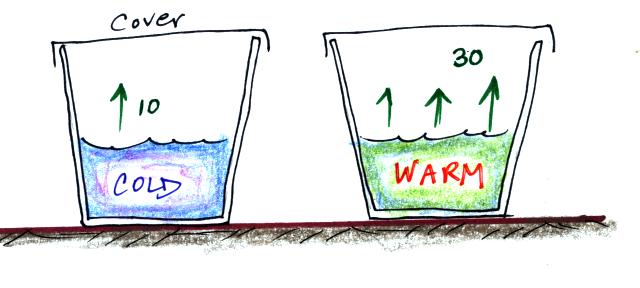
Water vapor will start to buildup in the air above each cup. And,
even though it has just evaporated, some of the water vapor will
condense and rejoin the water at the bottom of each cup. Let's
just assume that 1% of the water vapor molecules will condense.
The water vapor concentration in each glass will increase until it
reaches a point where
water evaporation rate = water
vapor condensation rate
for the cup of cold water
10 = 0.01 x water vapor
concentration
The 0.01 is 1% expressed in decimal form. Solving
this
equation gives you a water vapor concentration of 1000. The
air is saturated when you reach this point and the RH = 100%.
The saturation water vapor concentration in the air in the warm
cup would be 3000. And again the relative humidity would be 100%.
The fact that the rates of evaporation and condensation are equal when
air is saturated (RH = 100%) is something we'll be using later when we
study the formation of precipitation. Here's a picture of how
that would look inside a cloud.
The air inside the cloud is saturated. The rate of
evaporation from the cloud droplet (2 green arrows) is balanced by an
equal rate of condensation (2 orange arrows). The RH =
100%. The cloud droplet won't grow any bigger or get any smaller.
Here's something to test your understanding of this material.
What information can you add to this picture? Is the water in one
of the glasses warmer than the other? Is there more water vapor
in the air in one of the glasses than the other? Is the relative
humidity in each glass more than 100%, less than 100% or is it equal to
100%. The rates of evaporation and condensation aren't equal in
either glass, so the pictures will change with time. What will
the glasses look once they have reached equilibrium? Think about
this for a while and then click here for the answers
and some explanation.
Now onto the main event for today, some example humidity
problems. I got the impression that this was very confusing when
you saw it for the first time in class. Hopefully the more
detailed explanations below will help.
Example 1
Here's what was actually written down in class. You will
have a hard time unscrambling this if
you're seeing it for
the first
time or didn't understand it the first time. The series of steps
that we followed are retraced
below:
We're given an air temperature of 90 F and a mixing ratio
(r) of 6
g/kg.
We're supposed to find the relative humidity (RH) and
the dew point temperature.
We start by entering the data we were given in the
table. Once
you know the air's temperature you can look up the saturation mixing
ratio value (using the chart on p. 86 in the ClassNotes); it is 30 g/kg
for 90 F air. 90 F air could
potentially hold 30 grams of water vapor per kilogram of dry air (it
actually contains 6 grams per kilogram in this example).
Once you know mixing ratio and saturation mixing ratio you can
calculate the relative humidity (you divide the mixing ratio by the
saturation mixing ratio, 6/30, and multiply the result by 100%).
You ought to be able to work out the ratio 6/30 in your head (6/30 =
1/5 = 0.2). The RH is 20%.
The numbers we just figured out are shown on the top line
above.
(A) We imagined cooling the air from 90F to 70F, then to 55F, and
finally to 45F.
(B) At each step we looked up the saturation mixing ratio and entered
it on the chart. Note that the saturation mixing ratio values
decrease as the air is
cooling.
(C) The mixing
ratio doesn't
change as we cool the air. The only
thing that changes r is adding or removing water vapor and we aren't
doing either. This is probably the most difficult concept to
grasp.
(D) Note how the relative humidity is increasing as we cool
the
air. The air still contains the same amount of water
vapor it is
just that the air's capacity is decreasing.
Finally at 45 F the RH becomes 100%. This is kind of a special
point. You have cooled the air until it has become
saturated.
The dew point temperature in
this problem is 45 F.
What would happen if we cooled the air
further still, below the dew
point temperature?
35 F air can't hold the 6 grams of water vapor
that 45 F air can. You can only "fit" 4 grams of water vapor into
the 35 F air. The remaining 2 grams would condense. If
this happened at ground level the ground would get wet with dew.
If it happens above the ground, the water vapor condenses onto small
particles in the air and forms fog or a cloud. Now because water
vapor is being taken out of the air (the water vapor is turning into
water), the
mixing
ratio will decrease from 6 to 4. As you cool air below the dew
point, the RH stays constant at 100% and the mixing ratio decreases.
In many ways cooling moist air is liking squeezing a
moist sponge (this
figure
wasn't
shown
in
class)
Squeezing the
sponge and reducing its volume is like cooling moist air and reducing
the saturation mixing ratio. At first when you sqeeze the sponge
nothing happens, no water drips out. Eventually you get to a
point where the sponge is saturated. This is like reaching the
dew point. If you squeeze the sponge any further (or cool air
below
the dew point) water will begin to drip out of the sponge (water vapor
will condense from the air).
Example 2
The work that we did in class is shown above. Given an air
temperature
of 90
F and a relative humidity of 50% you are supposed to figure out the
mixing ratio (15 g/kg) and the dew point temperature (70 F). The
problem is worked out in detail below:
First you fill in the air temperature and the RH data that
you are
given.
(A) since you know the air's temperature you can look up the
saturation mixing ratio (30 g/kg).
(B) Then you might be able to figure out the mixing ratio in your
head. Air that is filled to 50% of its capacity could hold up to
30 g/kg. Half of 30 is 15, that is the mixing ratio. Or you
can substitute into
the relative humidity formula and solve for the mixing ratio.
Finally you imagine cooling the air. The
saturation mixing ratio decreases, the mixing ratio stays constant,
and the relative humidity increases. In this example the RH
reached 100% when the air had cooled to 70 F. That is the dew
point temperature.
We can use
results from humidity problems #1 and #2 to
learn a useful rule.
In the first
example the difference between the air and dew point
temperatures was large (45 F) and the RH was low (20%).
In
the
2nd
problem
the
difference
between
the
air
and
dew point
temperatures was
smaller (20 F) and the RH was higher (50%). The easiest way to
remember
this
rule is to remember the case where there is no difference between the
air and dew
point temperatures. The RH then would be 100%.
Example 3
You're given the mixing ratio (10.5) and the relative humidity
(50). What are the units (g/kg and %). Here's the play by
play solution to the question
You are given a
mixing ratio
of 10.5 g/kg and a relative humidity of 50%. You need to figure
out the air temperature and the dew point temperature.
(1) The air contains 10.5 g/kg of water vapor, this is 50%,
half, of what the air
could potentially hold. So the air's capacity, the saturation
mixing ratio must be 21 g/kg (you can either do this in your head or
use the RH equation following the steps shown above).
(2) Once you know the saturation mixing
ratio you can look up the air temperature in a table (80 F air has a
saturation mixing ratio of 21)
(3) Then you
imagine cooling the air until the RH becomes 100%. This occurs at
60 F. The dew point is 60 F.
Example 4
Probably the most difficult problem of the bunch. But one of the
things we said about dew point is that it has the same job as mixing
ratio - it gives you an idea of the actual amount of water vapor in the
air. This problem will show that if you know the dew point, you
can quickly figure out the mixing ratio. Knowing the dew point is
equivalent to knowing the mixing ratio.
Here's what we ended up with in class, we
were given the air temperature and the dew point temperature. We
were supposed to figure out the mixing ratio and the relative
humidity.
We enter the two temperatures onto a chart and look up the
saturation
mixing ratio for each.
We ignore the fact that we don't know the mixing
ratio. We do know that if we cool the 90 F air to 45 F the RH
will
become
100%. We can set the mixing ratio equal to the value of the
saturation mixing ratio at 45 F, 6 g/kg.
Remember back to the three earlier examples. When we
cooled air
to the the dew point, the mixing ratio didn't change. So the
mixing ratio must have been 6 all along. Once we know the
mixing ratio in the 90 F air it is a simple matter to calculate the
relative humidity, 20%.
Here's a list of some of the important facts and properties of the
4 humidity variables that we have been talking about. This list wasn't
shown in class.
